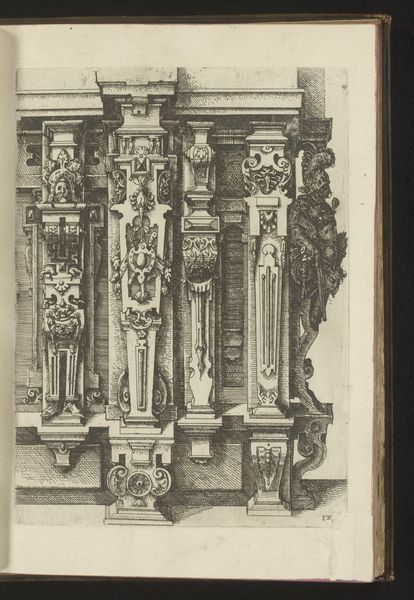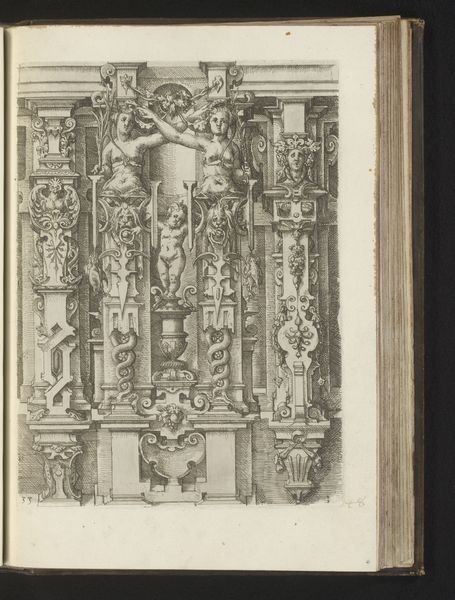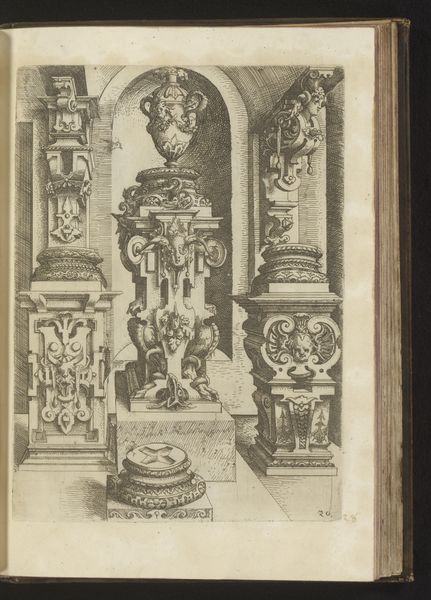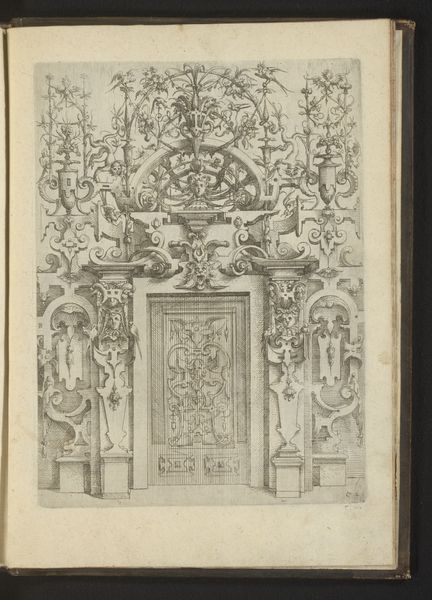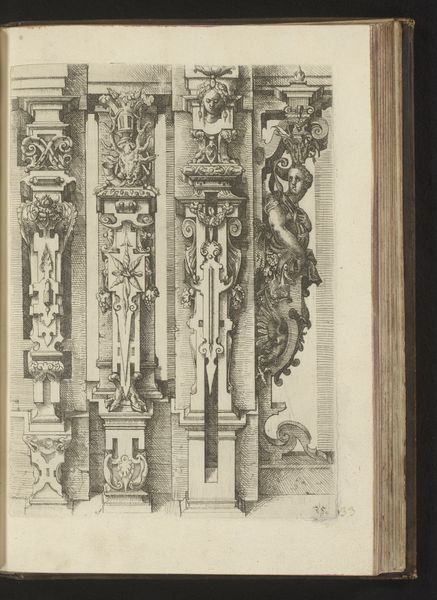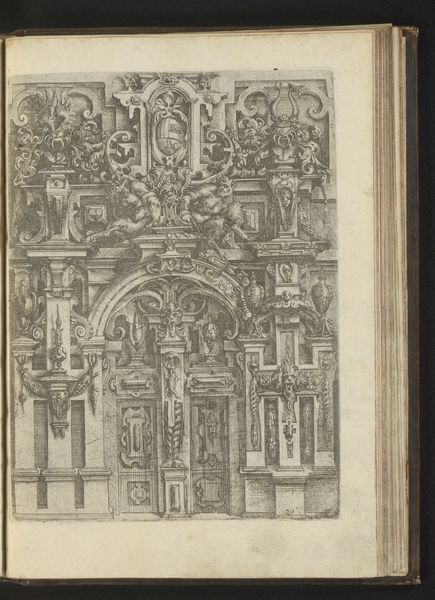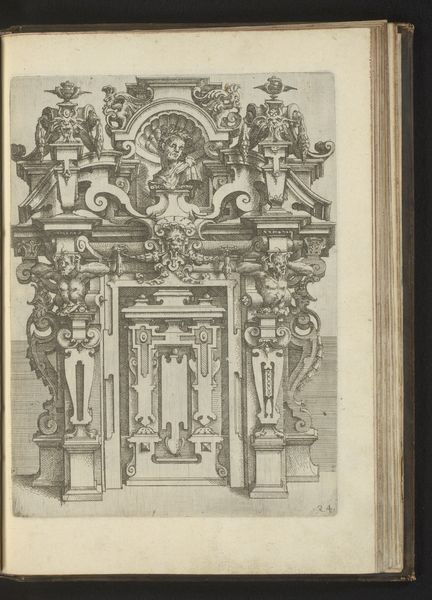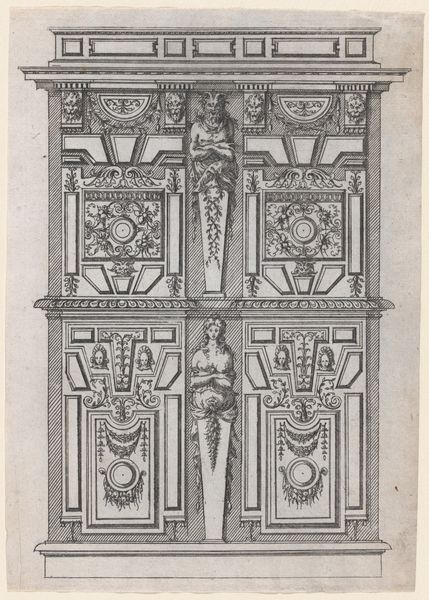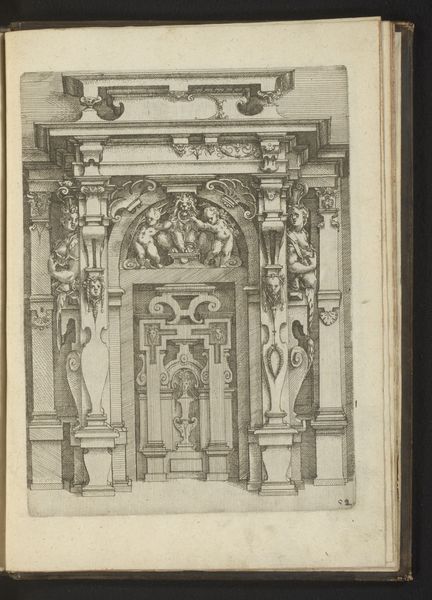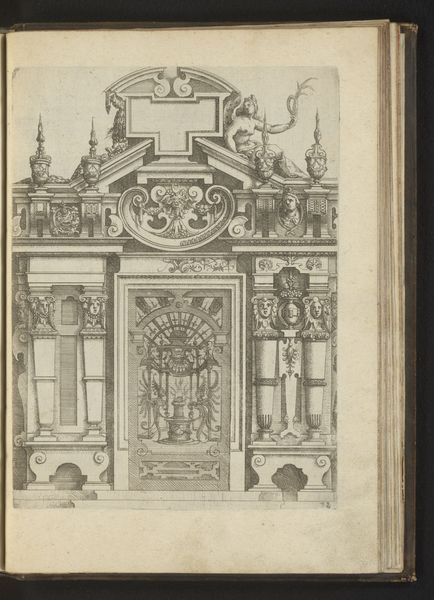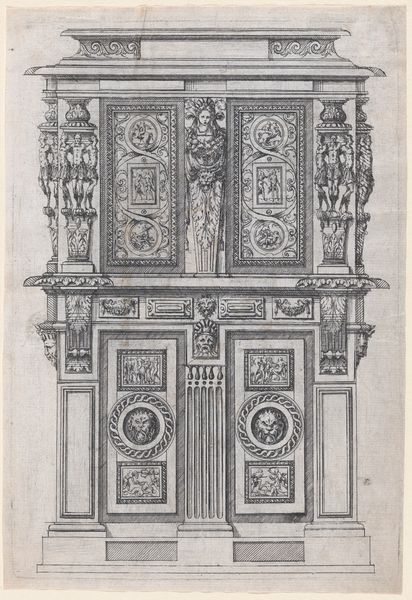
Vier Ionische pilasters gedecoreerd met rolwerk, bladranken, mascarons en een kariatide en een herme van opzij gezien 1593 - 1595
0:00
0:00
drawing, paper, ink, architecture
#
drawing
#
pen drawing
#
paper
#
form
#
11_renaissance
#
ink
#
geometric
#
line
#
architecture
Dimensions: height 252 mm, width 185 mm
Copyright: Rijks Museum: Open Domain
Wendel Dietterlin created this print of Ionic pilasters sometime in the late 16th century. The image is made by incising lines into a metal plate, inking it, and then running it through a press. Look closely, and you can see how the material quality of the metal allows for an incredible amount of detail. Dietterlin has used this process to show the pilasters in great detail: you can see the acanthus leaves, the volutes, and the other ornamentation that makes up these classical architectural elements. But what makes Dietterlin's approach so interesting is that he's not just copying classical forms, he's elaborating on them, letting his imagination run wild. In doing so, Dietterlin takes these classical forms and transforms them into something new. This print is not just a technical exercise but a demonstration of creative freedom. It's a testament to the power of craft. It demonstrates how materials and making can be used to challenge traditional notions of art and design.
Comments
No comments
Be the first to comment and join the conversation on the ultimate creative platform.
